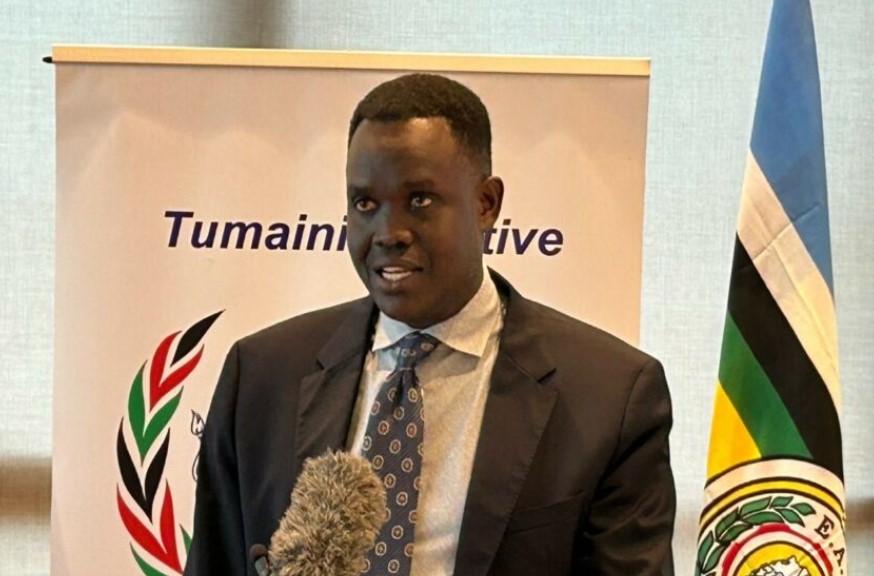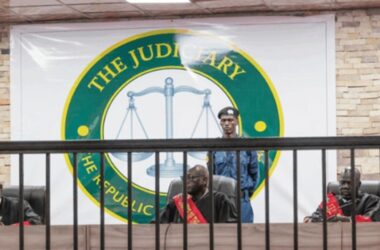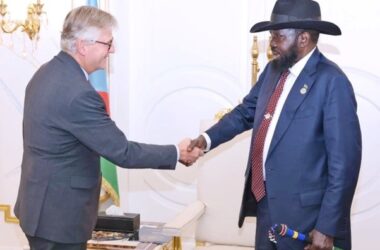By Yiep Joseph
Opposition group, United People’s Alliance (UPA) have reiterated their opposition to the government’s proposal to annex the Tumaini Initiative to the 2018 Revitalized Agreement on the Resolution of the Conflict in South Sudan (R-ARCSS).
On Tuesday, the government delegation presented its position, firmly demanding for the integration of the Tumaini consensus into the existing structures and implementation mechanisms of the R-ARCSS.
Dr. Martin Elia Lomuro, gov’t rapporteur said they have explained to the opposition and the mediation that the Tumaini consensus must be aligned with the provisions of the R-ARCSS.
He further emphasized the need for an agreement that accurately reflects the Tumaini consensus, either as an annex or a complementary document to the R-ARCSS.
However, Lual Dau, spokesperson for the opposition under the United People’s Alliance, stated after Wednesday’s consultations with the mediation team that they maintain their stance that the Tumaini consensus should be treated as a separate and independent agreement.
“We will be making our own presentation as UPA in the plenary where we will also make it crystal clear that the Tumaini consensus cannot and will not be signed and be annexed to the failed R-ACRSS,” Lual stated.
“Therefore, let it be known from today henceforth that the Tumaini consensus will be a stand-alone agreement with its own clear implementation mechanism as agreed in the initial protocols,” he added.
Today, the United People’s Alliance (UPA) is expected to present its position on the Tumaini Initiative, reiterating its demand that the agreement be treated as a separate entity and not an annex to the 2018 Revitalized Agreement on the Resolution of the Conflict in South Sudan (R-ARCSS).
This fundamental disagreement on the status of the Tumaini Consensus poses a significant obstacle to the signing of any final agreement.
Unless the parties are willing to compromise or the Kenyan mediators exert significant pressure, a breakthrough seems unlikely.
The upcoming face-to-face discussions between the parties will be crucial for determining the next steps.
The mediators will need to skillfully navigate the opposing positions and create an environment conducive to meaningful dialogue and compromise.
However, the current impasse raises serious concerns about the viability of the Tumaini peace process.
Commenting late last year, a political analyst who has been keenly following the trends surrounding the Tumaini initiative described the deadlock as a manifestation of the transactional behavior of the political elites rooted in personal and interpersonal political calculus around the throne of power earned through the elites’ power-sharing.
Prof. Dr. Luka Biong, in an opinion piece seen by this outlet, stated that to unlock the deadlock, President William Ruto and the mediation team need to visit Juba again and ensure clear directives to the delegation of the government about the previous joint communique and urge the delegation to accept the parallel discussion of concerns raised by the government about the eight protocols and responsibility sharing advanced by the opposition.
However, Prof. Biong said the risk of this scenario is that Kenya may run out of patience in continuing to invest in such a futile mediation with no hope for a credible peace deal to be implemented.
Also, he said, the dominant elements of the Anti-Tumaini Initiative in the delegation of the government may continue to advance their narrow political agenda to frustrate any diplomatic shuttling to unlock the deadlock.




